My last five posts,
W1702 – Andes Adventure 1,
W1702 – Andes Adventure 2,
W1702 – Andes Adventure 3,
W1702 – Andes Adventure 4 and
W1702 – Andes Adventure 5
documented a fabulous extended 5 night shore tour to the Andes in Ecuador and to Peru, which began in Manta, Ecuador and finished in Paracas, Peru.
The next five days of this epic cruise were then spent sailing west out into the Pacific Ocean, heading for the iconic tiny island of Easter Island. This Island had always fascinated me since I was a child, and saw documentaries on television about the statues on the island and about Thor Heyerdahl’s voyages on fragile rafts. Having the chance to visit the island and see the statues for myself was one of the biggest highlights of this cruise, and one of the main reasons for booking it.
There were two big clouds on the horizon that might put this visit in jeopardy though:
• To land on Easter Island involves using the ship’s tenders, and the seas around the island are notoriously rough, and only around one in five cruise ships are successful in landing their passengers
• Someone had brought norovirus on board the ship while she was in Peru. The captain had immediately introduced ‘code red’ precautions to try and minimise spread of the virus around the other passengers on board, but there were an increasing number of cases reported. I was worried that if the virus was rife amongst the passengers then the island authorities might not allow the ship to even take well passengers ashore.
On his noon report the day before we arrived at the island, the captain gave a pessimistic report about the weather, saying that heavy swells had been forecast for the next day. Needless to say I went to bed that night with my fingers, toes and everything else firmly crossed for the next morning.
We were due to anchor up off Easter Island before 8am and thus before dawn that morning. I apprehensively went up on deck, only to find it was raining quite hard. However to my relief the sea appeared to be quite calm, and also I could see some streaks of clear sky over the island. I only stayed on deck a few minutes, then returned to my cabin to change my wet shirt before breakfast.
We took an early breakfast as nearly all the Tours ashore, including the one we were booked on, were due to leave early in the morning. However when we met up with a friend on deck, we were surprised to see the ship’s tenders were still firmly attached high up on our ship. After quite a while the Cruise Director came on the tannoy to announce that they were still waiting for clearance to go ashore for the passengers, and until that clearance had been given they were not allowed to launch the ship’s tenders. Moreover the launch bringing the island officials from the island to the ship to grant that clearance had yet to arrive! A little while later he announced all tours were delayed by an hour. Eventually the launch arrived, and a number of officials boarded our ship. Usually the approval process is much of a formality as much of the paperwork can be processed ahead of time online these days, but in this case the time ticked by… and ticked by. First we had an announcement that the delay would be two hours not one, then that the tours would run in the afternoon, with the ship’s departure deferred until the evening. Eventually the ship’s tenders were launched, and we dared to believe we would be going ashore after all!

Regular readers might remember that in my second post about this cruise, W1702 – Funchal Fun, I wrote about taking a lady from my dinner table, Carol, to see the painted doors in Funchal, Madeira. What I haven’t documented until now is that since then Carol and I have spent increasing amounts of time in each other’s company, and that we are now in a relationship. Indeed it was missing Carol that made me so impatient to get back to the ship at the end of my long 5 night Andes shore tour.
This shore tour was very significant for me not only because I had wanted to visit the island since I was a child, but also because it was the first tour I was doing with Carol. We checked in together on the ship, then took a tender ashore. As we approached the island shore we could see some quite big breakers coming ashore not far from the tiny harbour the tenders were using.
Very close to the harbour steps were a line of small busses, and we boarded one and we were soon on our way. As well as the local driver, there was a local guide on board, and he explained that we would be visiting four sites during our afternoon tour, all of which featured the moai – the stone statues for which the island is so famous. Moai are monolithic human figures carved by the Rapa Nui people on Easter Island between 1250 and 1500 A.D. Around 900 were carved, nearly half of them are still at the main quarry, Rano Raraku, but hundreds more were transported from there and set on stone platforms called ahu around the island’s perimeter. The moai are mainly the living faces of deified ancestors, and were stood with their backs to the sea, gazing inland across the land of the clan that erected it. Almost all moai have overly large heads which are three-eighths the size of the whole statue. The statues still gazed inland when Europeans first visited the island in 1722, but all of them had fallen by the latter part of the 19th century – the moai toppled after European contact when islander traditions radically changed.
The tallest moai erected, called Paro, was almost 10 metres high and weighed 82 tons. The heaviest erected was a shorter but squatter moai at Ahu Tongariki, weighing 86 tons; and one unfinished sculpture, if completed, would have been approximately 21 metres tall with a weight of about 270 tons.
The first location we went to, Ahu Tahai, was not far away – just the other side of the main town Hanga Roa from the little harbour. Here there were five moai in a row, which we had already seen from the ship earlier. Nearby there were two more moai, each standing alone, one of which is the only moai that still has it’s eyes intact:
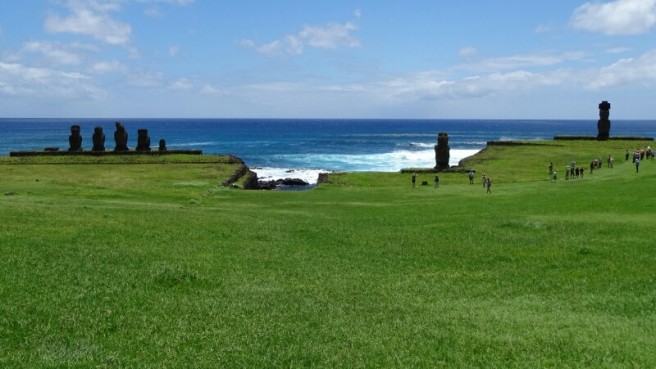
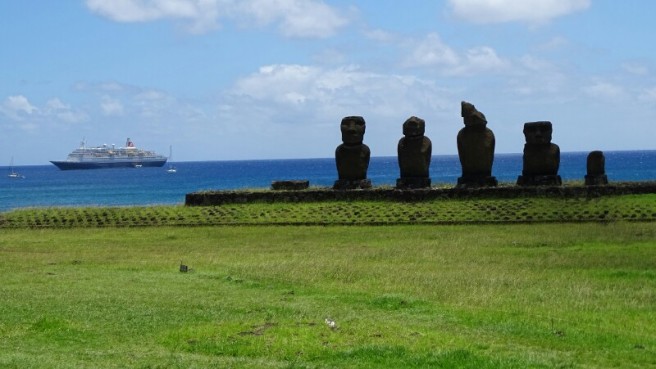
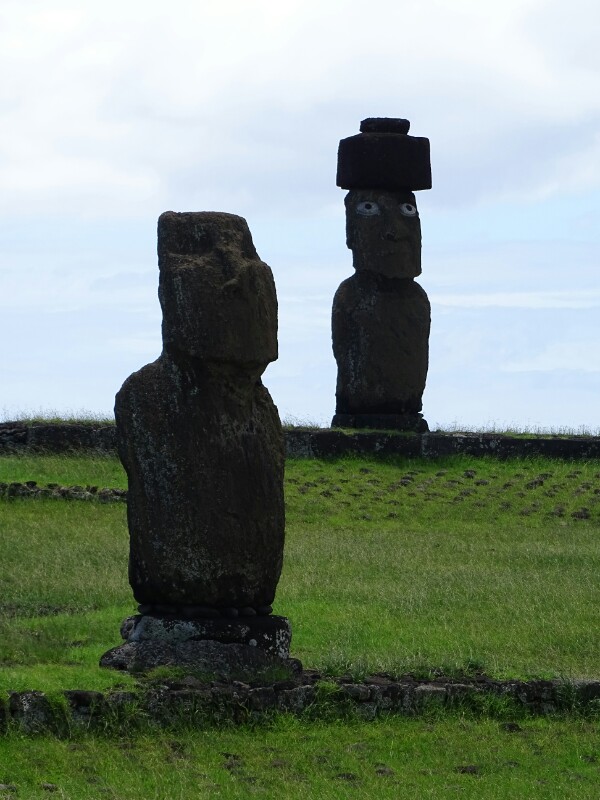
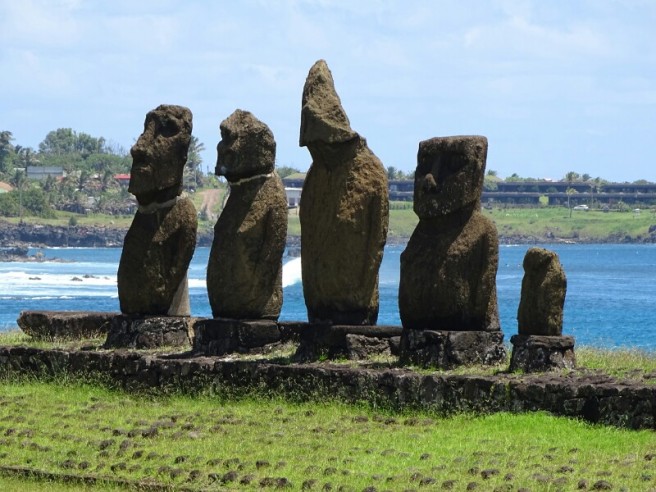
The moai looked very dramatic set against the blue sea behind, and our ship in the distance also added to the picture. We could also see the waves curling into the shore:


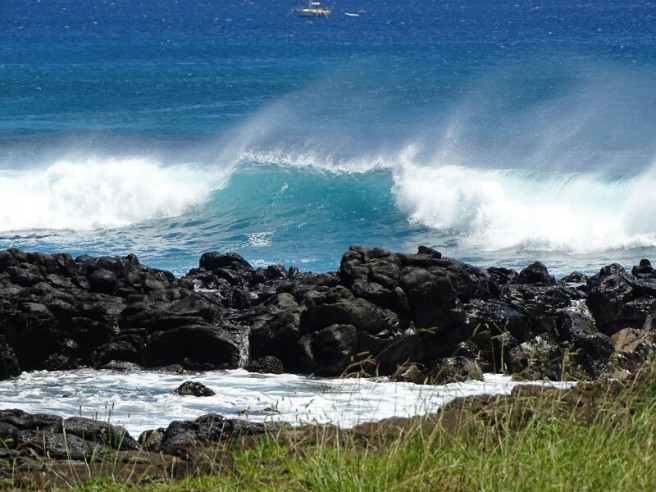
We then had a much longer drive across the island to Rano Raraku, where most of the moai were quarried. We had a short walk up the hillside from the carpark to where the moai were lying on or half buried in the slopes of an extinct volcano. It was fabulous to get so close to so many of them, and also to see some half completed moai still embedded in the volcanic rock:

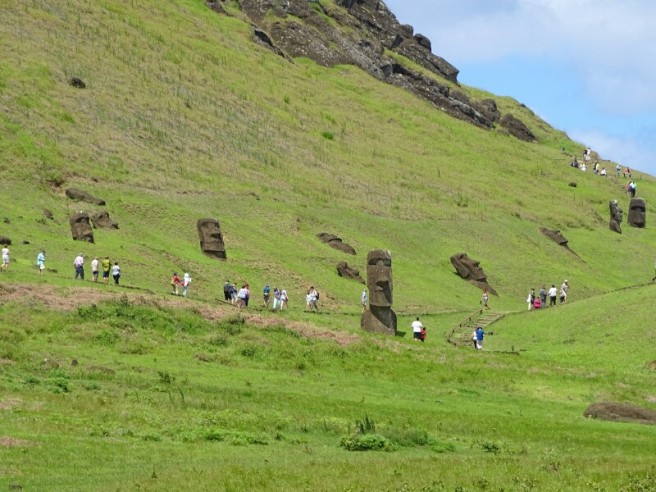
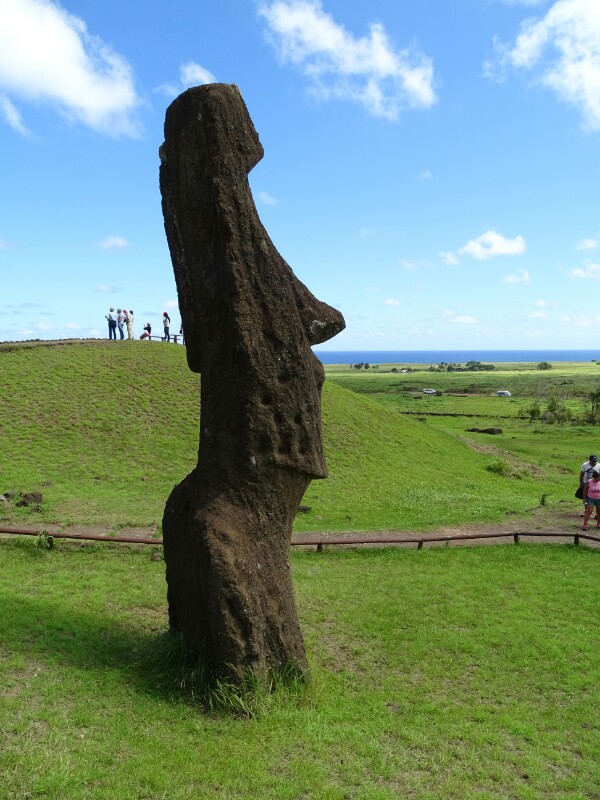

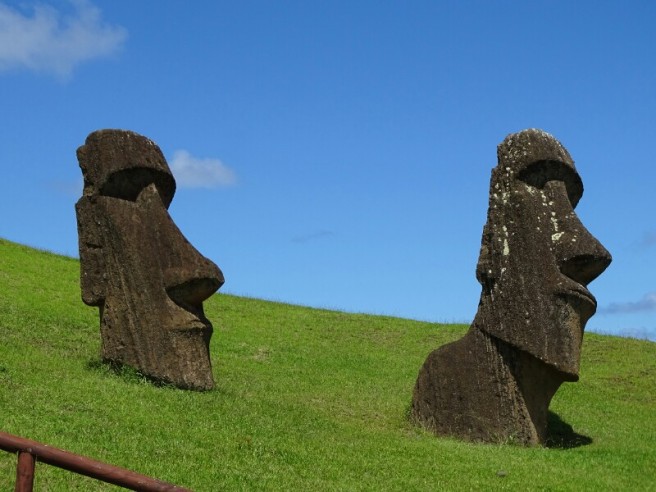
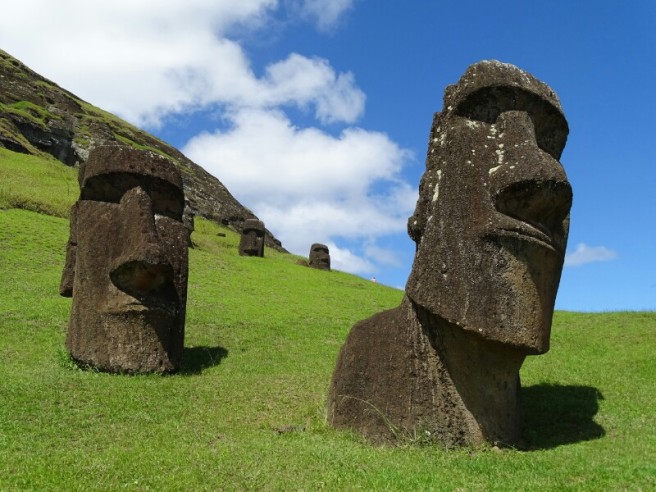
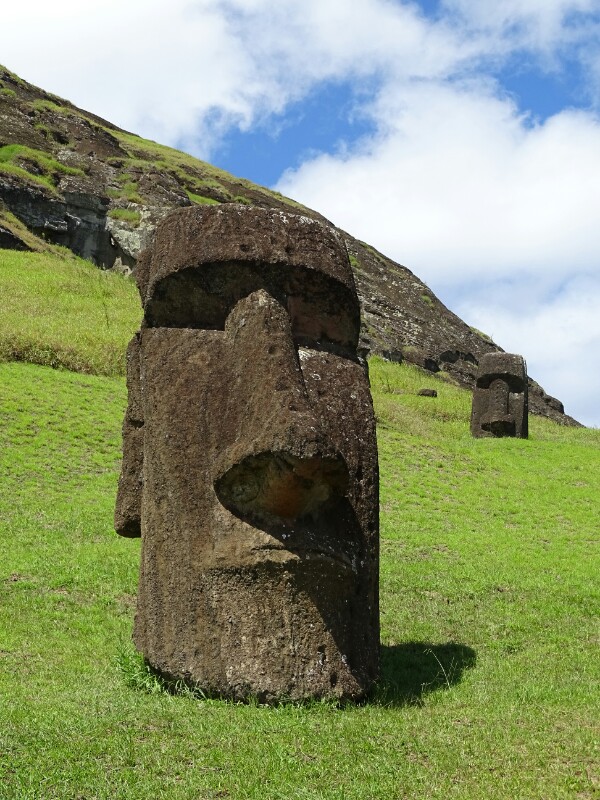

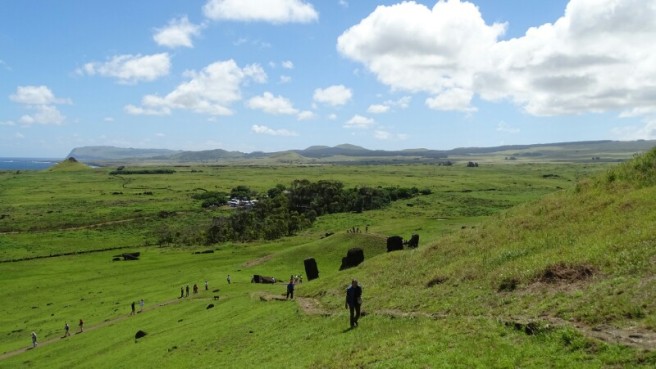
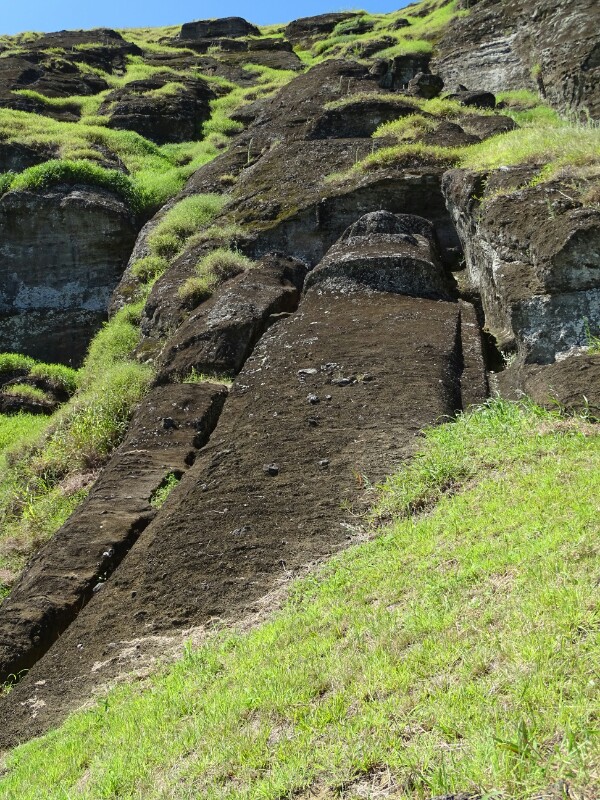
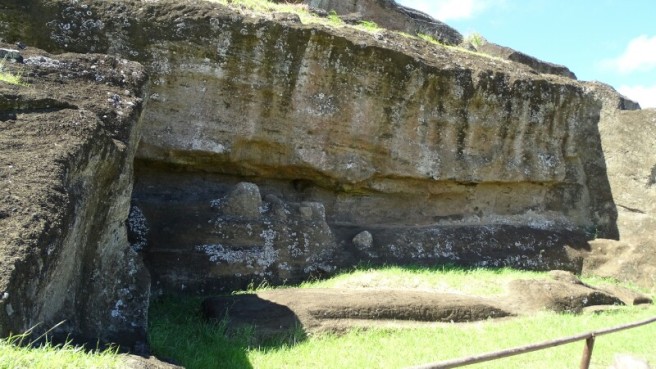
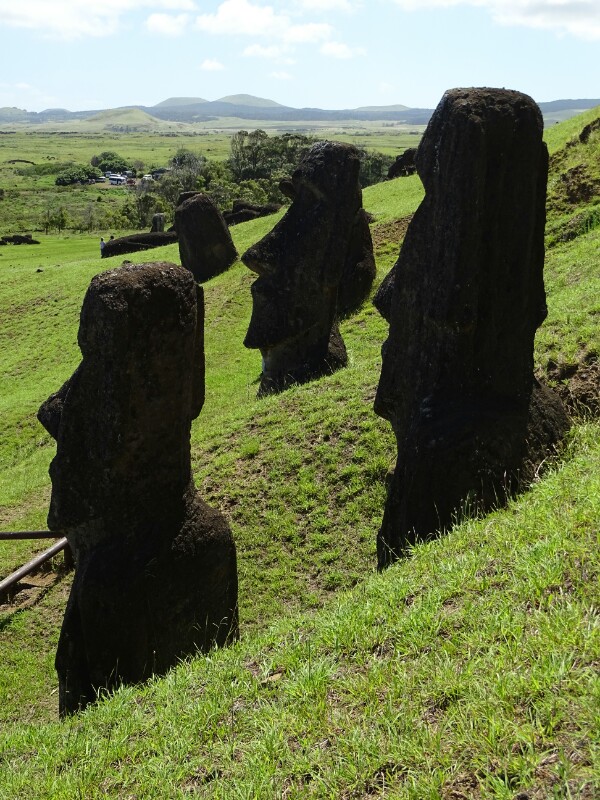
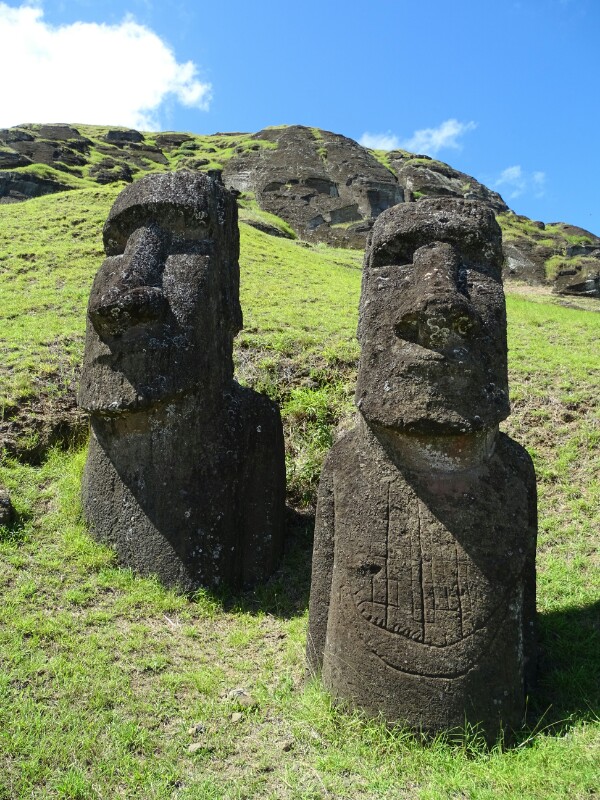
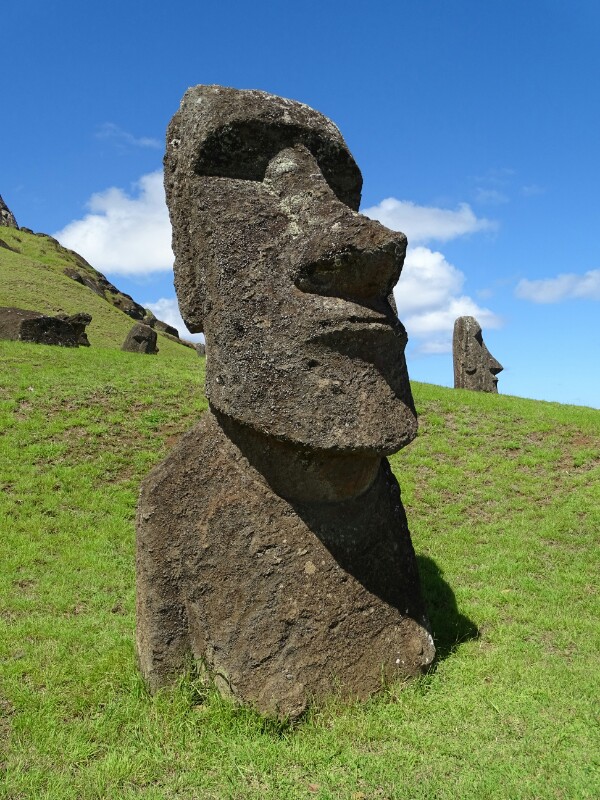
Our third site, Ahu Tongariki was just a short drive away, the site of the largest ahu on the island with 15 huge moai. These moai were the most impressive and dramatic of all those we saw on the island – they totally dominated the landscape, and Carol in particular really felt they were gazing down into her soul. In 1960 a huge tidal wave forced these moai, many weighing up to 80 tonnes, several hundred feet inland. Now restored to their ahu platform, they greet the sunset every year during the summer solstice:

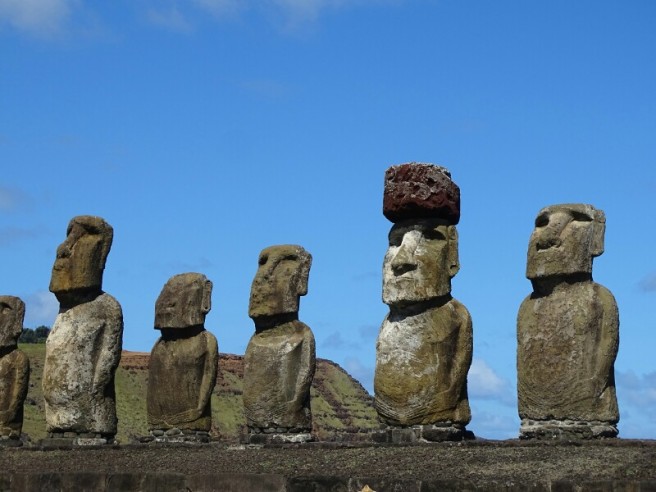
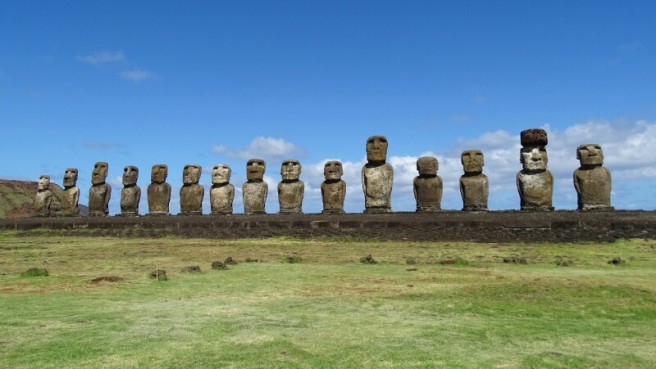

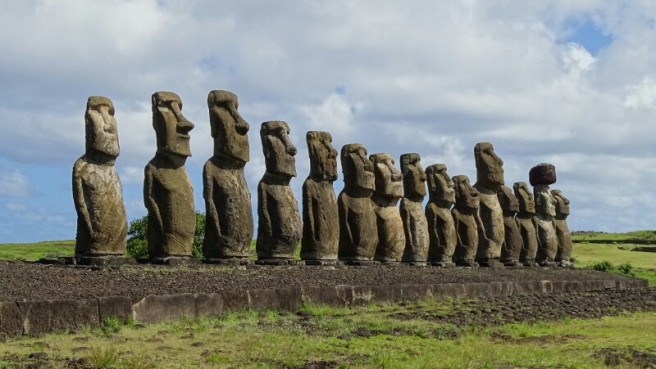
We then drove further along the coast to our final site, a lovely sandy beach called Playa de Anakena. The beach with all the surrounding palm trees was very attractive, but to my eyes spoilt by there being so many people there:
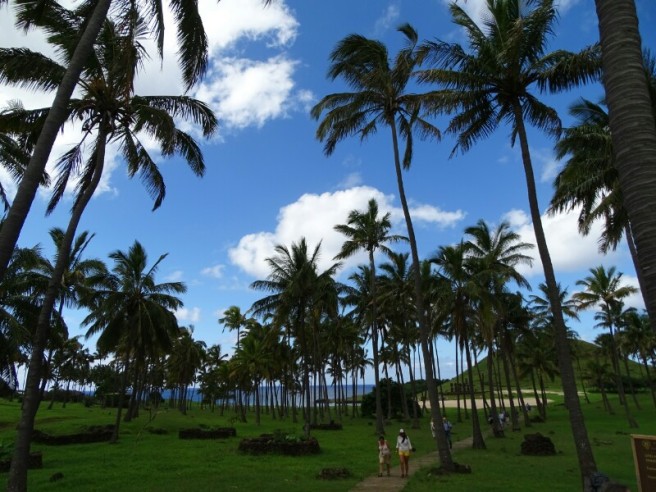
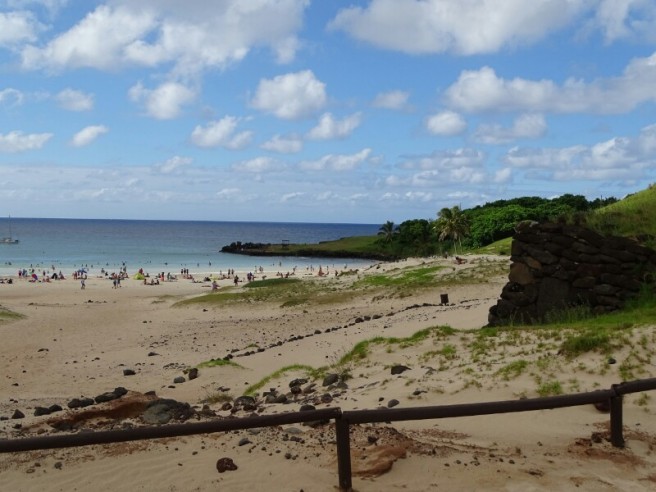
Adjacent to the beach was Ahu Ature Huki, with a row of seven moai. Four of the seven moai on the ahu had pukao on their heads, which represents the topknot of the chieftains. According to local tradition, the mana (or power, effectiveness and prestige) was preserved in the hair. The pukao were carved out of red scoria, a very light rock from a quarry at Puna Pau. The colour red is considered a sacred colour in Polynesia. The addition of a pukao adds further status to a moai:

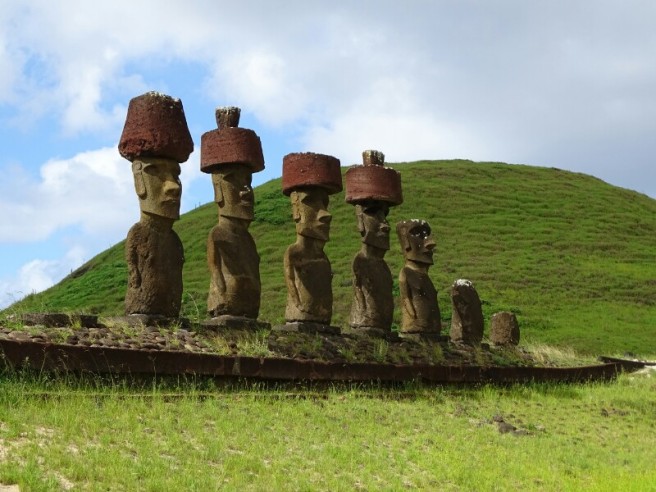
All too soon it was time to reboard the bus and take the drive back across the island to the little harbour. As we crossed the island both Carol and I were struck by how much more green the island was than we expected, and how some of the vistas of green fields, trees and hedgerows might just of been mistaken for the UK.
Arriving back at the little harbour, we watched the curling waves once more, and some locals paddling their canoes whilst we waited in a queue to board a ship’s tender. By the time we were safely back on board our ship we were too late for dinner as usual in the main restaurant, so after a quick wash and change it was off to the café for our evening meal.
After all the uncertainties it was such a relief that we had actually made it onto the island, and seeing so many of the huge and imposing moai had more than lived up to my hopes for the tour. It was truly a day to remember and will definitely be a highlight of the whole world cruise.
Following our day at Easter Island, we had a further five days at sea before our next landfall at Tahiti, emphasising just how remote Easter Island is. Events at Tahiti and the following two islands will be the subject of my next post.
Well easy to see why it has been a lifetime ambition to see Easter Island Graham, and as you say it’s very green. Fascinating to think how they were moved; a recent programme on the orkneys looked at standing stones there and concluded they must have used large quantities of sea weed to lubricate the sliding process
Hope you are still having a great time and things are going well
All the best John
LikeLiked by 1 person